I’m sure Sheldon Keefe has felt like Reg Dunlop over the past nine months or so, with every fan he encounters telling him to get the power play together. And, yeah yeah, have they ever been working on it. They’ve juggled positions and coaches and at times personnel to no avail. Their power play struggles contributed to their post-season exit, and have been well documented.
On Tuesday night the Leafs went a whopping 1-for-1 on the power play, which is nothing to devote a column to in itself. But the ideas and execution that went into its success are, because “working on the power play” — and tangibly improving it — could be the difference between success and failure for a top-heavy Leafs team that needs the PP to be an asset.
Without delving too deep into the fancy stats on their PP success/failures to date, the Leafs have still generated plenty of opportunities on the power play this season, finding themselves third in “expected goals” there in the league, but I need to emphasize this point by saying it with my whole chest here: nobody cares. There is a shelf life on “the process is good and the results will come” and the Leafs have been only average on the power play long enough despite having some of the league’s top-end talent that the “yay process” refrain has expired. It’s results time.
So how did they get results in their 10th game of the season, and what can they take from that going forward?
[snippet id=5216510]
The Leafs’ power play is not what everyone (sometimes their coaches included) want it to be: Tampa Bay. They cannot stay stationary and have opponents’ PKs run around trying to cover off the Stamkos one-timer and the Hedman zinger and the quick-touch shot of Point and the Kucherov little back-heel cutter of a one-timer. Toronto doesn’t even have Killorn gumming up the works in the crease. They do not have those players, and you have to coach your personnel not your preferred system.
Toronto’s power play needs three things: movement, players coming downhill, and the puck in the hands of the forwards, not the D. Everyone so badly wants there to be a “QB” on the power play because it makes sense in our brains, but what makes sense for the Leafs is that there isn’t one, and the forwards have to be the guys calling the plays for this group. Morgan Rielly can and should distribute the puck, and same goes for Rasmus Sandin, but this power play has to run off the flanks.
Watch what I mean about coming downhill and movement.
The first proper in-zone set-up came off this face off win by John Tavares, when Auston Matthews touches the puck back to the point, and everyone is where they’re supposed to be on paper. What Matthews does so well when he’s on that flank is not just stop and be a pass option, he wants to get up and out of the zone, so the next time he gets a touch, he’s a pass option moving towards the Vegas goal with a little pace (which is what we mean by “downhill”).

Look how high Matthews gets at the top of the next frame here, where his skates are actually up out of the zone. It’s a 1-3-1 like everyone else around the league, but the Leafs flanks should be moving up and down like a bird flapping its wings.
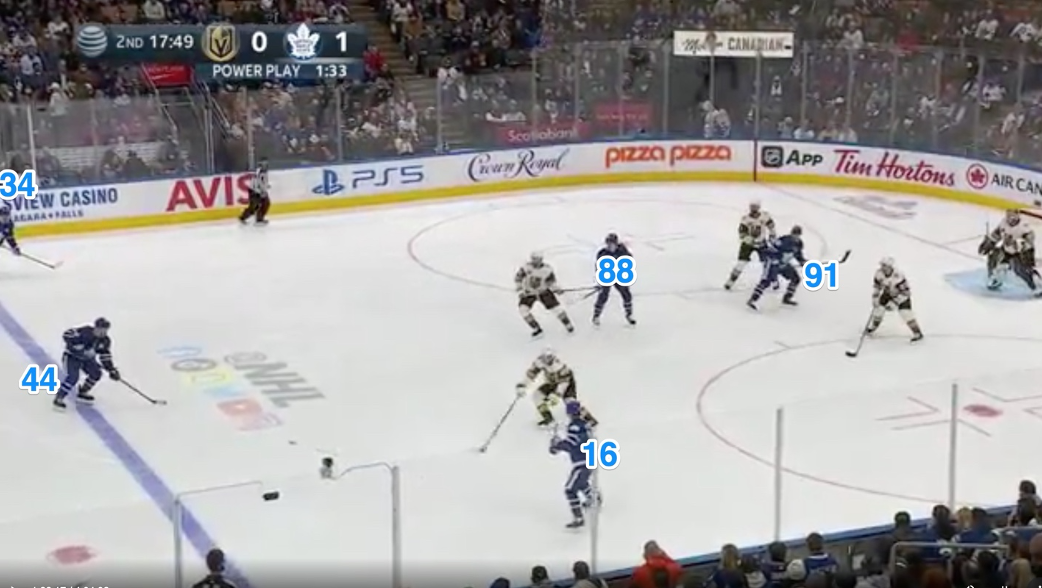
So Matthews gets it back in the frame below, but it just kinda smells…unthreatening. He’s pretty far out, and the PK and goalie are pretty well set to defend him.
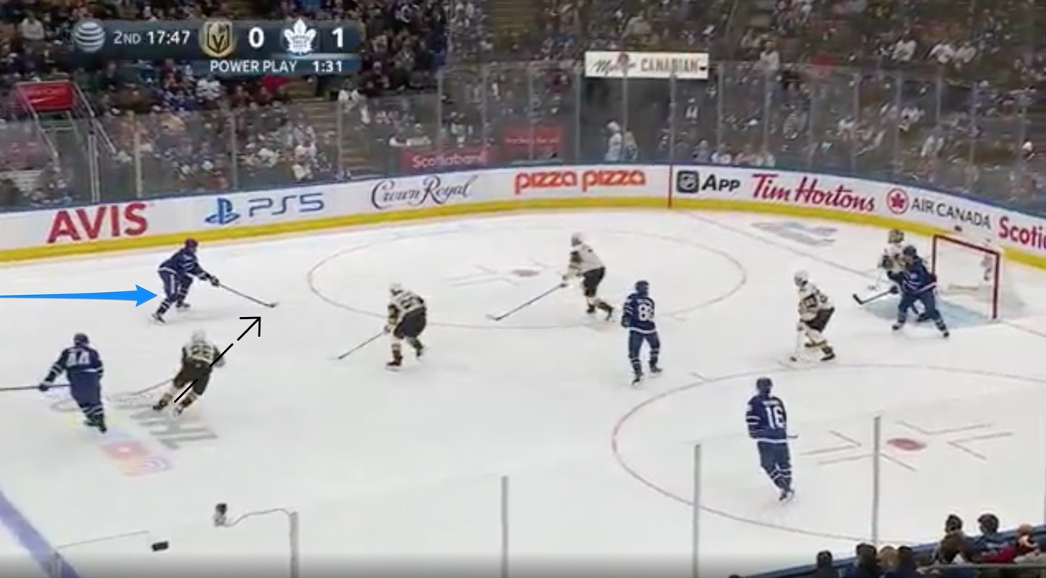
Tavares can help him out a bit more here. JT’s a scorer by nature, and you can see he’s offering himself just off the back post as more of a pass-tip option, but I’d rather just see him take away Robin Lehner’s eyes and trust Matthews to find a spot to put his elite shot. (This was a Zach Hyman staple that’s made him as effective in Edmonton as it did in Toronto.)

Matthews decides there’s nothing there and wants to curl back, and now we get into what I was talking about with player movement. Below you can see Nylander has come out of the slot to provide an option, and Tavares has come across and below the goal line to do the same. Matthews relieves pressure by passing up to the point, but that’s good puck support and the type that keeps a team on offence even when things go wrong.
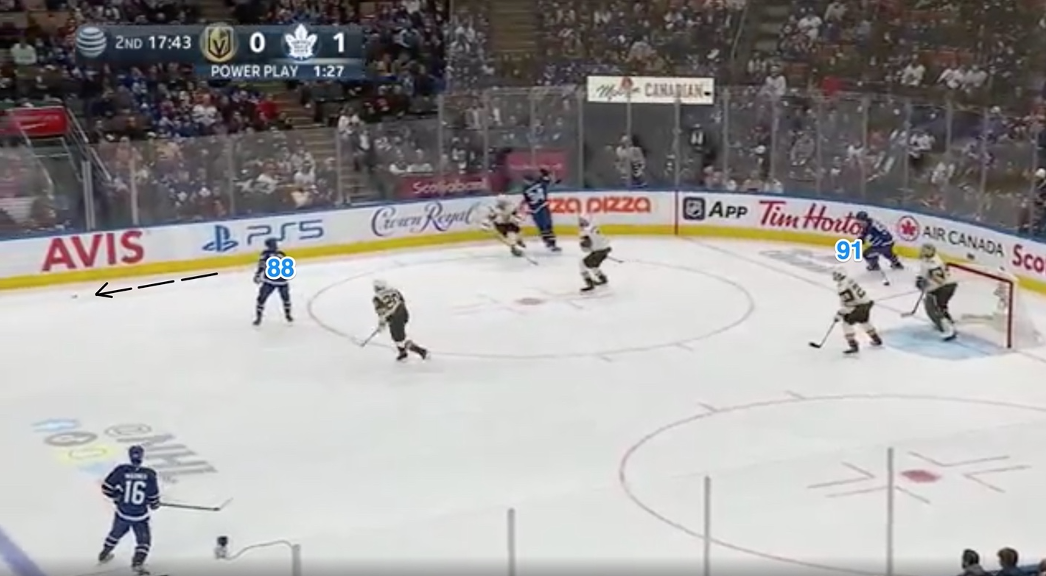
Morgan Rielly gets the puck up top and takes a shot from distance which is … OK at best. It encapsulates what I mean about the Leafs not needing Rielly (or Sandin) to be a part of the creative process. They should never force things. There’s no screen in front, his forwards need to reset a bit, and for the love of god, if you just give this to Marner he’s got an ocean of room to skate — wait for it — downhill at the net to create. Rielly should mostly be a hinge who only pulls the trigger when he finds himself wide open (as he did earlier in this odd-man advantage off a broken play).
I mean, look at this picture below. Just swing it to the other side! Leafs PP1 defencemen should be playing checkers not chess. It sounds harsher than I mean it but: it’s the forwards’ power play, you just get to be on it.
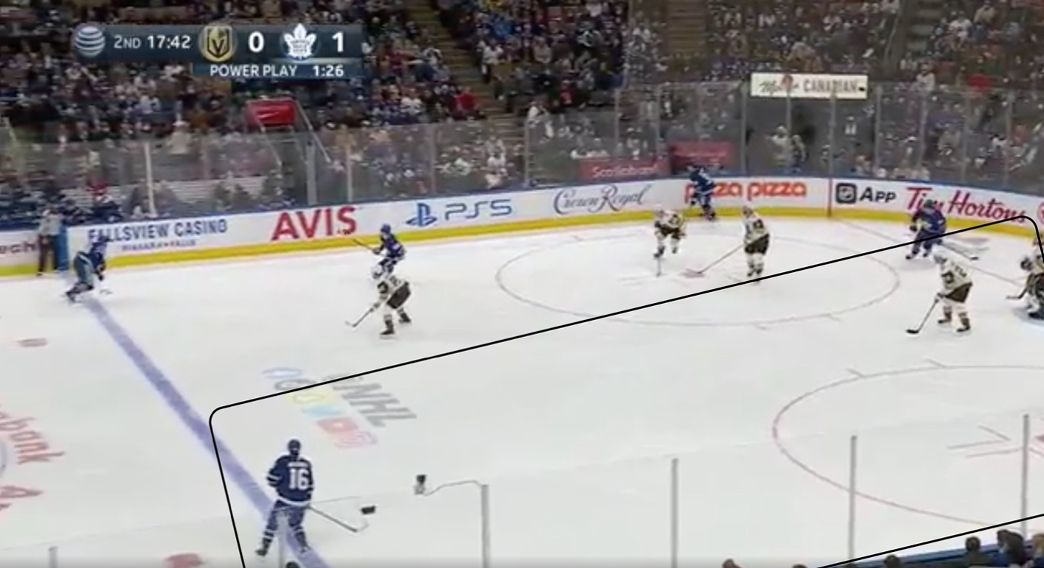
The shot takes a bounce to Marner’s side, and all the forwards stay in good motion. If you look at the frame above again you can see Nylander at the top of the circles, and now he gets over to this sweet spot for Marner, who’s moved down all the way to the goal line to find an opening. This can happen because the PP and PK are in motion, and one of Marner’s gifts is seeing seams amidst movement that average NHLers can’t. There’s more good support (and a little pick) from Tavares below, too.
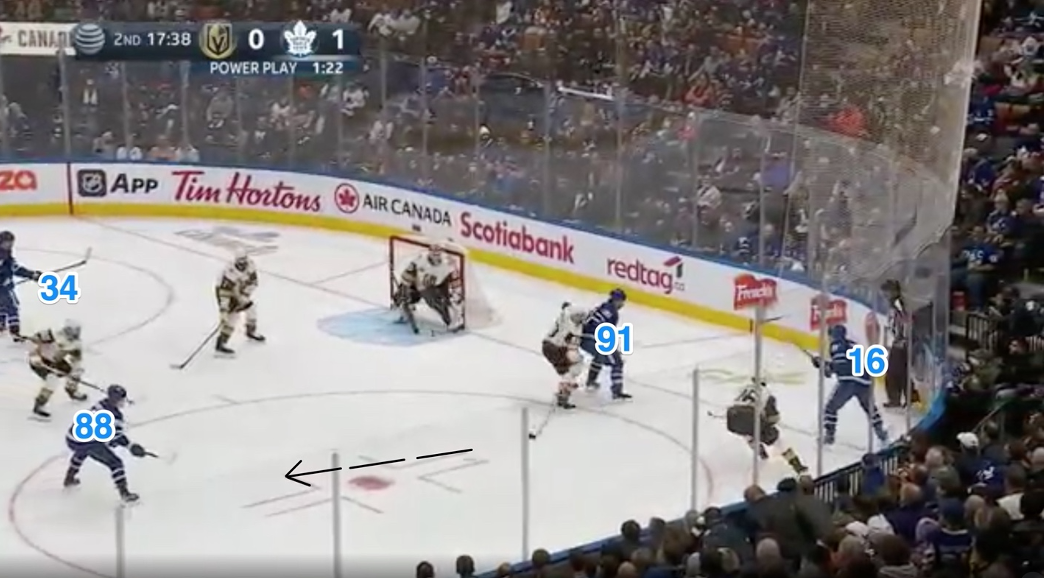
The puck ends up coming out of the zone shortly after.
Following their next entry, Marner found himself on the opposite flank, and I love that the Leafs don’t race to get back to their “spots.” This is “replaceable parts,” meaning if the play takes you somewhere new, you stay there, and other people can just fill in the empty spots accordingly.
The puck ends up on Nylander’s stick up at the blue line, and he gets it down to Matthews, who’s now on the other side of the rink, too. They’ve all played all over the power play, so everyone should be comfortable everywhere.
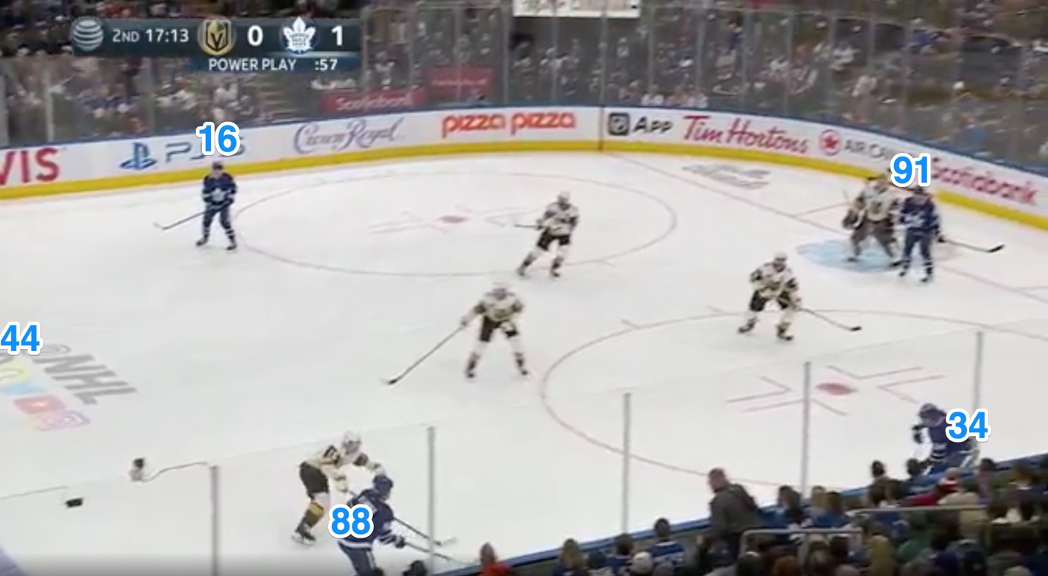
If Vegas sees a lot of threats on the Leafs’ unit, they seem to be inviting them to use what they view as less of a threat — the pass in to Tavares around the crease. Sometimes you just have to take what the PK gives you, and Matthews gets it to Tavares in a primo spot.
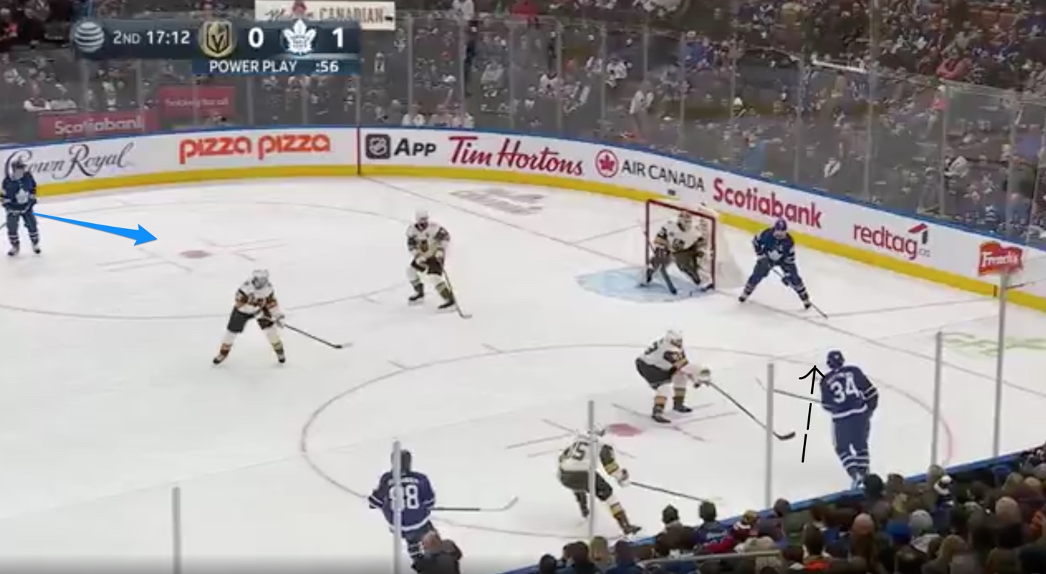
The only criticism here is with Marner at the top of the next picture below. The second it looks like the puck may go in to the net-front guy, Marner needs to be immediately heading down to the net to provide a pass option for Tavares and a rebound threat from the flank. Movement, movement, movement. He’s just a little too far out of the picture to be a threat.
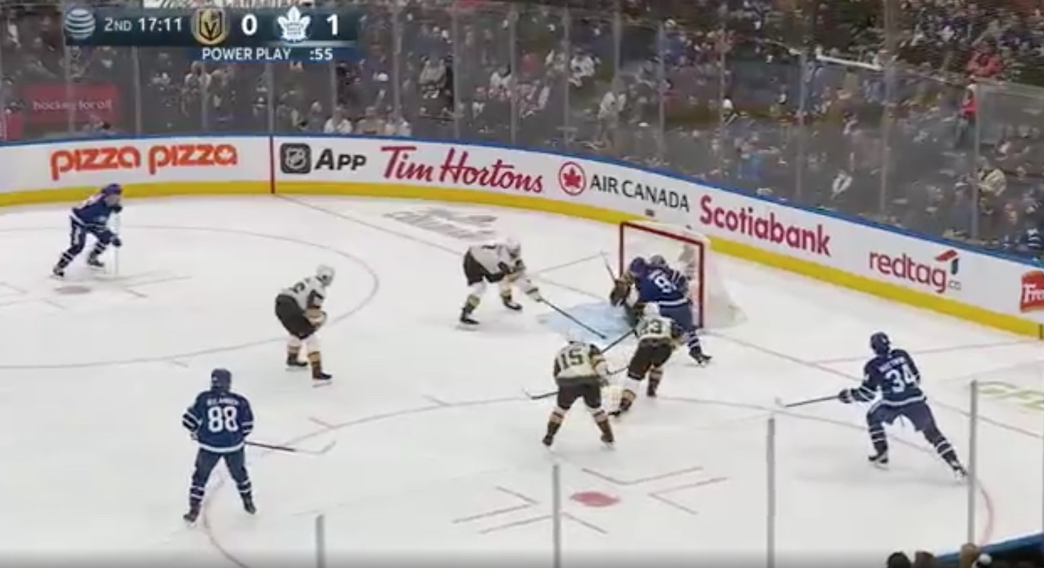
What makes me think about movement as a priority with this Leafs team is just how dangerous they become off broken plays because of the creativity and offensive ability of their top-four forwards. When the opposing D get scrambling, they’re in big trouble against the Leafs.
That Tavares net jam led to a puck battle, which led to Matthews and Marner on the same side of the rink, with Marner winning the puck and going for a little skate to gain some separation from his defender.
Here’s where I go back to “downhill,” and I don’t care if I’m making you crazy with that phrase, because you can’t imagine how much the actual players have to hear the same things from the coaching staff as constant reminders. Marner’s route takes everyone high up in the zone…
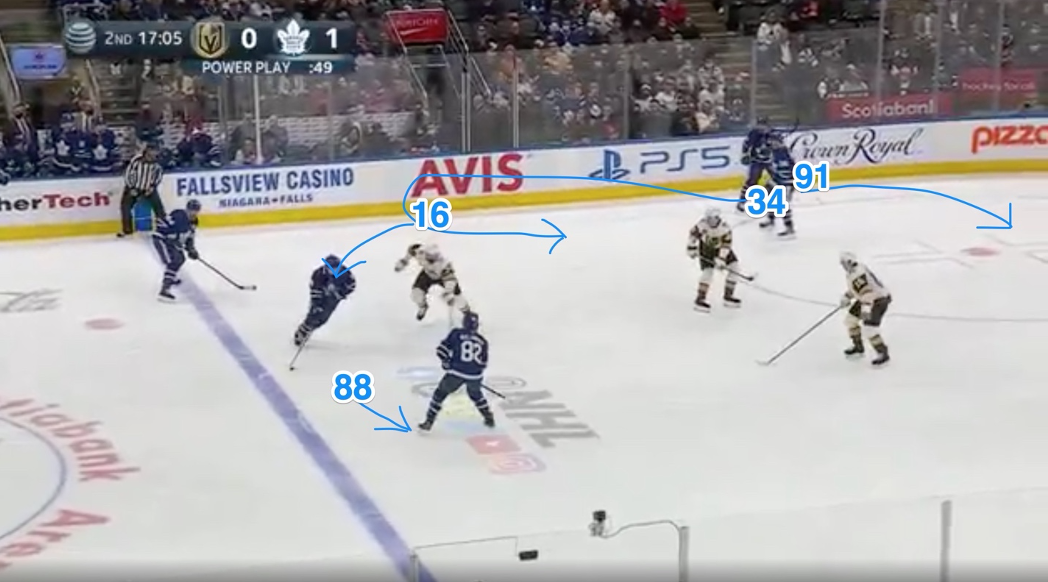
And will you look at that, things start to seem a lot more dangerous. Again, look at Matthews make a conscious effort to move and get up in the zone, so he can feast when he’s heading down into it. In fact, after Nylander makes room for Marner and gets the puck at the top of the zone, all five Leafs are in a position to start crashing down on the net while the Vegas PK has lost its shape (assuming their defensive plan wasn’t an I formation).
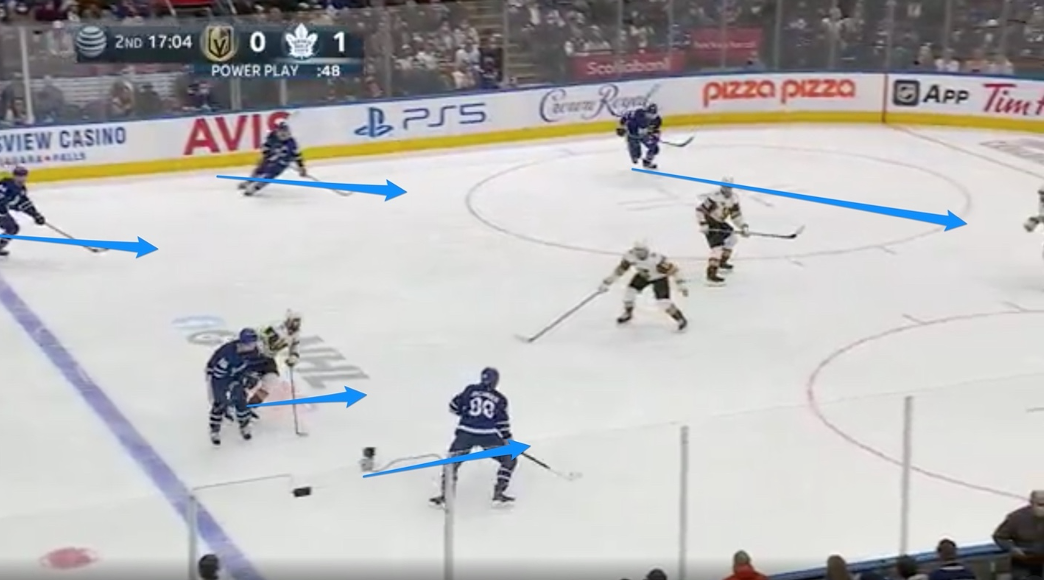
The Vegas penalty killer in the middle (Jake Leschyshyn, also the guy Marner victimized for the game’s first goal) believes everyone is still above him — as it appears in the picture above — but the Leafs’ movement has him lose track of ol’ 34, which historically has not ended well for defences.
Nylander is gonna … shoot this? He sits the puck in his shooting slot for an extra second to hold Lehner…
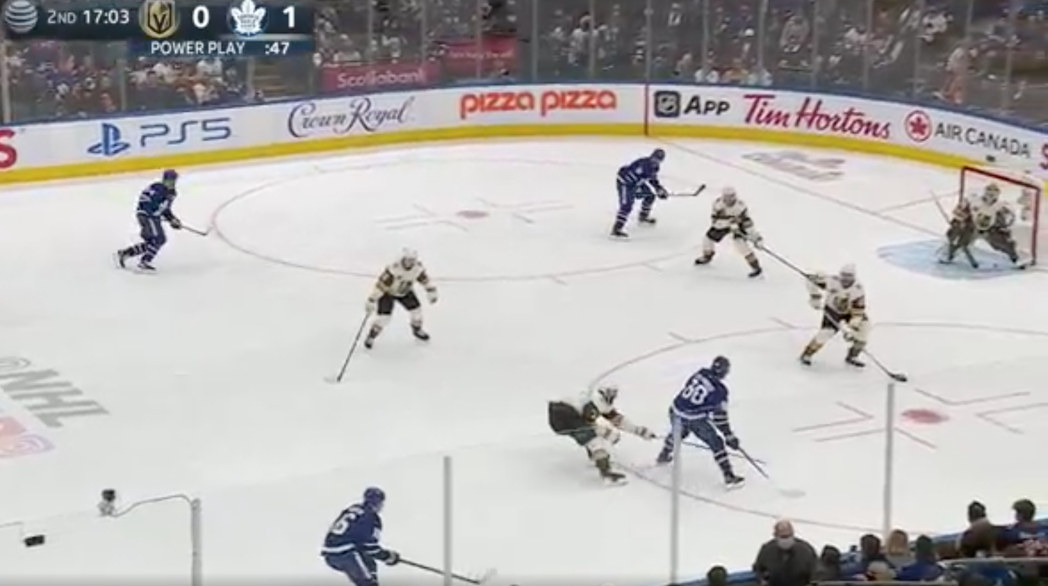
…But he does not “shoot this.”
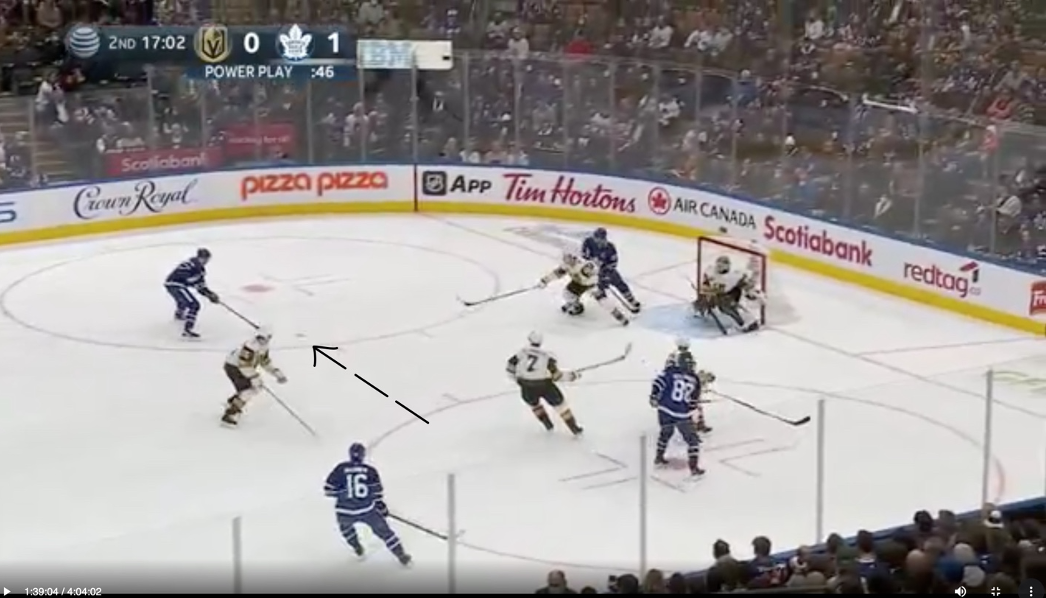
It’s underneath Leschyshyn, and Lehner might be grateful Matthews hit his spot and didn’t hit him in the neck or something. It’s an absolute laser. The catch — and the ability to have the puck in his exact shooting spot in a heartbeat from said catch — to the release are breathtaking.
Here it is in GIF form.
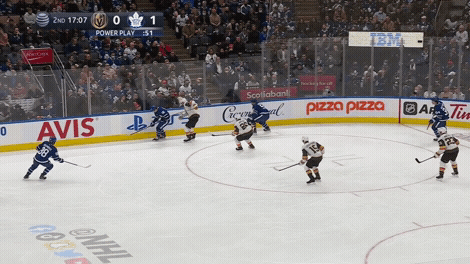
The Leafs don’t have the Lightning’s PP1 personnel, nor do they have the Oilers’. But they have very good PP1 personnel, and unique talents who need less structure and more swirl to find the type of seams they’re built to capitalize on. It takes effort and energy, which can be tough to conjure up night in and night out over an 82-game season. But when they bring it, they can turn what’s been a weakness into a strength.
[relatedlinks]





COMMENTS
When submitting content, please abide by our submission guidelines, and avoid posting profanity, personal attacks or harassment. Should you violate our submissions guidelines, we reserve the right to remove your comments and block your account. Sportsnet reserves the right to close a story’s comment section at any time.